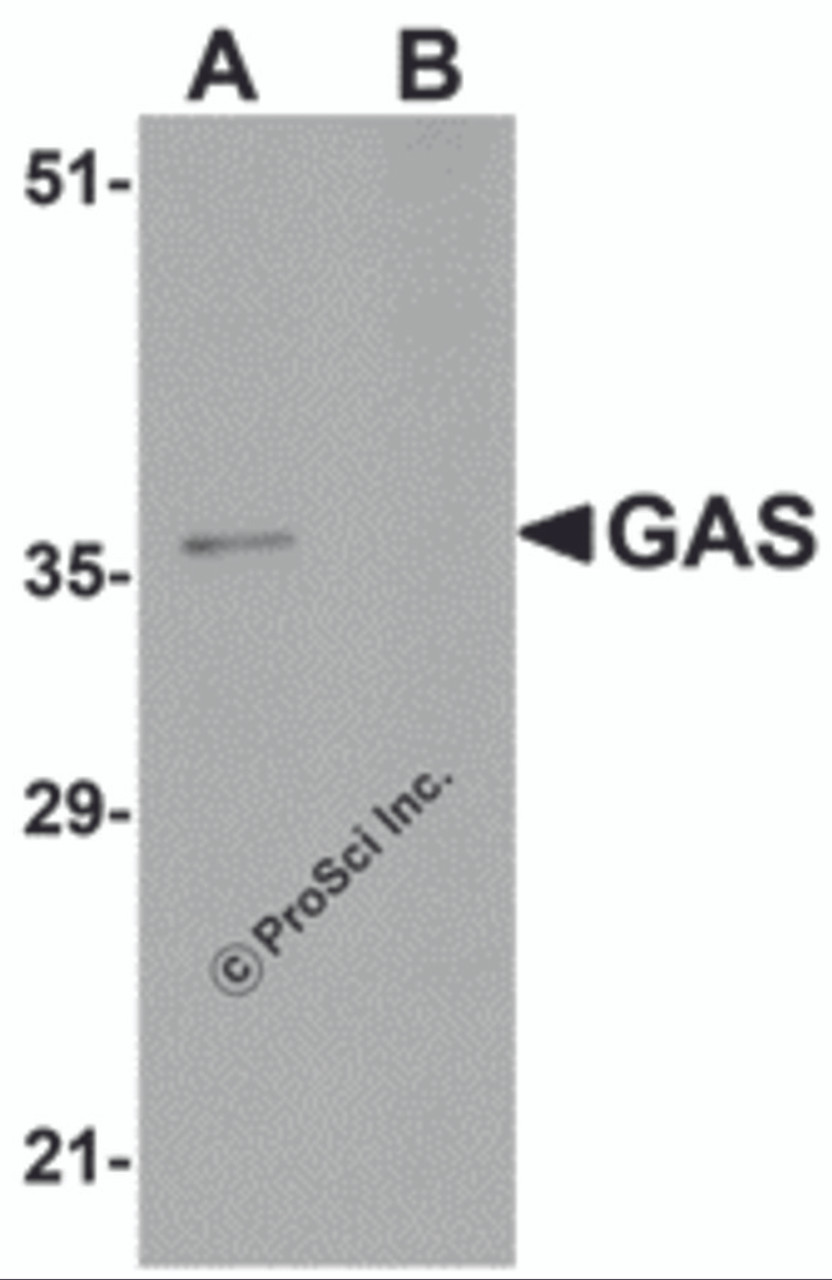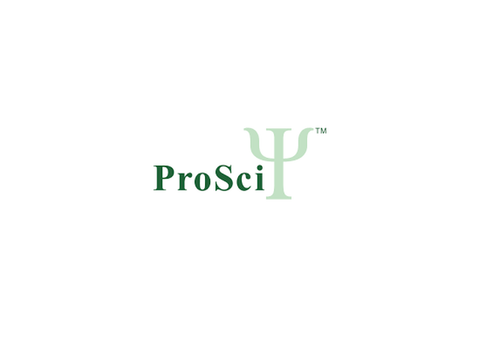Product Description
GAS Antibody | 5437 | ProSci
Host: Rabbit
Reactivity: Human, Mouse
Homology: Predicted species reactivity based on immunogen sequence: Bovine: (93%) , Rat: (93%)
Immunogen: GAS antibody was raised against a 15 amino acid synthetic peptide from near the carboxy terminus of human GAS.
The immunogen is located within the last 50 amino acids of GAS.
Research Area: Homeostasis
Tested Application: E, WB
Application: GAS antibody can be used for detection of GAS by Western blot at 1 μg/mL.
Antibody validated: Western Blot in mouse samples. All other applications and species not yet tested.
Specificiy: N/A
Positive Control 1: Cat. No. 1287 - EL4 Cell Lysate
Positive Control 2: N/A
Positive Control 3: N/A
Positive Control 4: N/A
Positive Control 5: N/A
Positive Control 6: N/A
Molecular Weight: N/A
Validation: N/A
Isoform: N/A
Purification: GAS Antibody is affinity chromatography purified via peptide column.
Clonality: Polyclonal
Clone: N/A
Isotype: IgG
Conjugate: Unconjugated
Physical State: Liquid
Buffer: GAS Antibody is supplied in PBS containing 0.02% sodium azide.
Concentration: 1 mg/mL
Storage Condition: GAS antibody can be stored at 4˚C for three months and -20˚C, stable for up to one year. As with all antibodies care should be taken to avoid repeated freeze thaw cycles. Antibodies should not be exposed to prolonged high temperatures.
Alternate Name: GAS Antibody: GAS, PA1, C16orf53, PAXIP1-associated glutamate-rich protein 1, PAXIP1-associated protein 1
User Note: Optimal dilutions for each application to be determined by the researcher.
BACKGROUND: GAS Antibody: Steroid receptor co-activators (SRCs) were initially described as nuclear receptor transcription co-activators, but they have recently been determined to co-regulate transcription initiated by other transcription factors. GAS is a recently identified glutamate-rich protein that interacts with SRC1, but not GRIP1 or AIB1, the other two members of the SRC family. GAS can also interact with the alpha subunit of the estrogen receptor (ERalpha) , but not other receptors such as the retinoic acid receptor a, suggesting the interaction between GAS and ERalpha is relatively specific. Depletion of GAS by RNA interference in MCF7 cells led to a decrease in the mRNA and protein levels of ER target genes such as pS2, c-Myc and cyclin D1, indicating the role of GAS in the regulation of ER target genes. GAS has also been found to associate with an SET1-like methyltransferase complex specific for H3K4 methylation, suggesting that GAS has multiple roles in transcriptional regulation.
 Euro
Euro
 USD
USD
 British Pound
British Pound
 NULL
NULL














